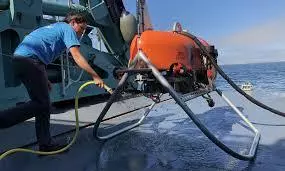
NASA advances robotic technologies for autonomous ocean world exploration
text_fieldsNASA is developing cutting-edge robotic technologies to enable autonomous exploration of "ocean worlds," including Europa and Enceladus, icy moons believed to have conditions suitable for extraterrestrial life.
Two key initiatives driving these advancements are the Ocean Worlds Lander Autonomy Testbed (OWLAT) and the Ocean Worlds Autonomy Testbed for Exploration, Research, and Simulation (OceanWATERS).
Developed at NASA's Jet Propulsion Laboratory (JPL), OWLAT focuses on simulating physical operations, while OceanWATERS, created at the Ames Research Center, offers a virtual testbed. Both platforms are designed to tackle the unique challenges of exploring these moons, such as low-gravity conditions, rugged icy terrain, long communication delays, and limited energy resources.
OWLAT features a Stewart platform that mimics low-gravity dynamics, a robotic arm, force sensors, and interchangeable tools for sampling. It uses autonomy software to execute tasks safely and efficiently, controlled via a Robot Operating System (ROS) interface. This setup allows engineers to test lander hardware and refine operational protocols in real-world scenarios.
OceanWATERS provides a simulated environment replicating Europa-like terrain. It evaluates decision-making algorithms for sample collection, terrain interaction, and energy efficiency under simulated conditions. The system includes fault injection tools to anticipate and resolve potential failures, enhancing the lander’s reliability.
Researchers funded through NASA’s ARROW (Autonomous Robotics Research for Ocean Worlds) and COLDTech (Concepts for Ocean Worlds Life Detection Technology) programmes have employed these technologies for a range of projects. These include advanced fault-detection systems by Dr. Eric Dixon from Lockheed Martin and terrain-adaptive autonomy research led by Dr. Melkior Ornik of the University of Illinois.





